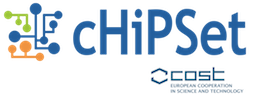New publications of the cHiPSEt members – AMCS special section
It is our pleasure to announce that Mauro Iacono and Joanna Kolodziej have edited the special section on “ “ of the “Applied Mathematics and Computer Science” ICR Journal. Prof. Luis Correia and Dr Piotr Arabas from WG1, WG2 and WG are the authors of the papers in that section. Congratulations!


